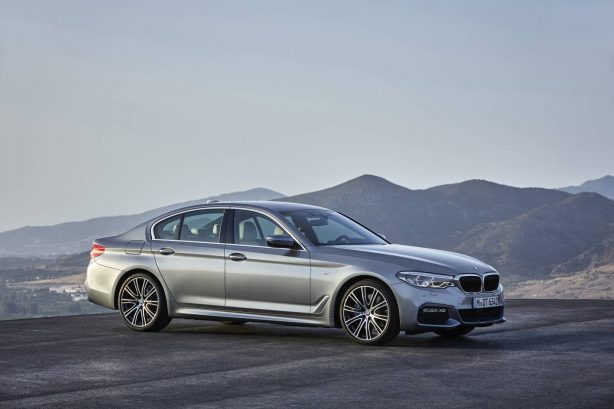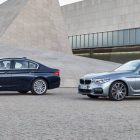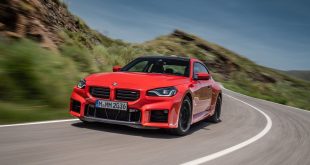BMW has finally taken the wraps off its all-new, seventh-generation 2017 5 Series after a series of leaked photos and teasers.
Sporting a handsome but understated new sheet metal, the car is also up to 100kg lighter than the outgoing model, thanks to extensive use of high-strength steel, aluminium and magnesium.
Its design can be described as evolutionary with a familiar silhouette. At the front, the major change can be found in the headlights that now flow into the kidney grille, making the nose appear wider. The grilles themselves now feature active slats that close when condition required for better aerodynamics.
As before, customers ticking the M Sport package option will get sportier front and rear bumpers, chunkier side skirts, lowered suspension, 19-inch wheels and twin rectangular exhaust pipes for a sportier look.
The G30 5 Series’ dimensions have been stretched slightly compared to the outgoing model, with the car now measuring 4,935mm in length, 1,868mm in width and 1,466mm in height. The extra length means an extra 1.2 inches of legroom for the rear passengers.
At launch in February next year, four new powertrains will be on offer, all connected to an eight-speed automatic transmission and optional xDrive all-wheel drive system.
The 530i, which replaces the 528i, is powered by a 2.0-litre turbocharged four-cylinder petrol engine delivering 185kW and 350Nm of torque. It will hit 100km/h from a standstill in a claimed 6.2 seconds (6.0 seconds for the xDrive), while returning a combined fuel consumption of 5.4L/100km (5.7L/100km for xDrive) and CO2 emission of 126g/km (133g/km for xDrive).
The range-topping variant at launch is the 540i, which uses a 3.0-litre turbocharged inline six with 250kW and 450Nm of torque. It will do 0-100km/h in a claimed 5.1 seconds (4.8 for xDrive) and return 6.5L/100km (6.7L/100km for xDrive). CO2 emission is rated at 150g/km (156g/km for xDrive).
On the diesel side, the 520d is propelled by a 2.0-litre four-cylinder turbodiesel producing 140kW and 400Nm of torque. It is the only variant available with a six-speed manual transmission. 0-100km/h is taken care of in a claimed 7.6 seconds (auto and xDrive) or 7.7 seconds for the manual. Fuel consumption is rated at 4.1L/100km for the manual, 4.0L/100km for the auto and 4.2L/100km for the xDrive auto, with CO2 emission at 108g/km (manual), 107g/km (auto) and 112g/km (xDrive).
Finally, the 530d comes with a 3.0-litre six-cylinder diesel that generates 195kW and 620Nm of torque. It will accomplish 0-100km/h in a claimed 5.7 seconds (5.4 for xDrive), while combined consumption is rated at 4.5L/100km (4.7 for xDrive) and CO2 emission is a claimed 118g/km (125g/km for xDrive).
A plug-in hybrid 530e iPerformance with 185kW/420Nm, an ultra frugal 520d EfficientDynamics Edition that promises just 3.9L/100km while retaining the same output and a M550i xDrive powered by a 4.4-litre twin-turbo V8 putting out 340kW/650Nm will join the range in March 2017.
The G30 5 Series also sees the debut of semi-autonomous technologies where the car is able to accelerate, brake and steer itself at speeds of up to 210km/h. While the driver’s hands are free, they can interact with the iDrive 6.0 infotainment system that now features gesture control.
Its Display Key – first introduced on the new 7 Series – also enables functions such as remote-controlled parking.
The 2017 BMW 5 Series is expected to reach Australian shores towards the second half of next year.
 ForceGT.com Car News, Car Reviews, Video Reviews, Tuning and much more.
ForceGT.com Car News, Car Reviews, Video Reviews, Tuning and much more. 

























